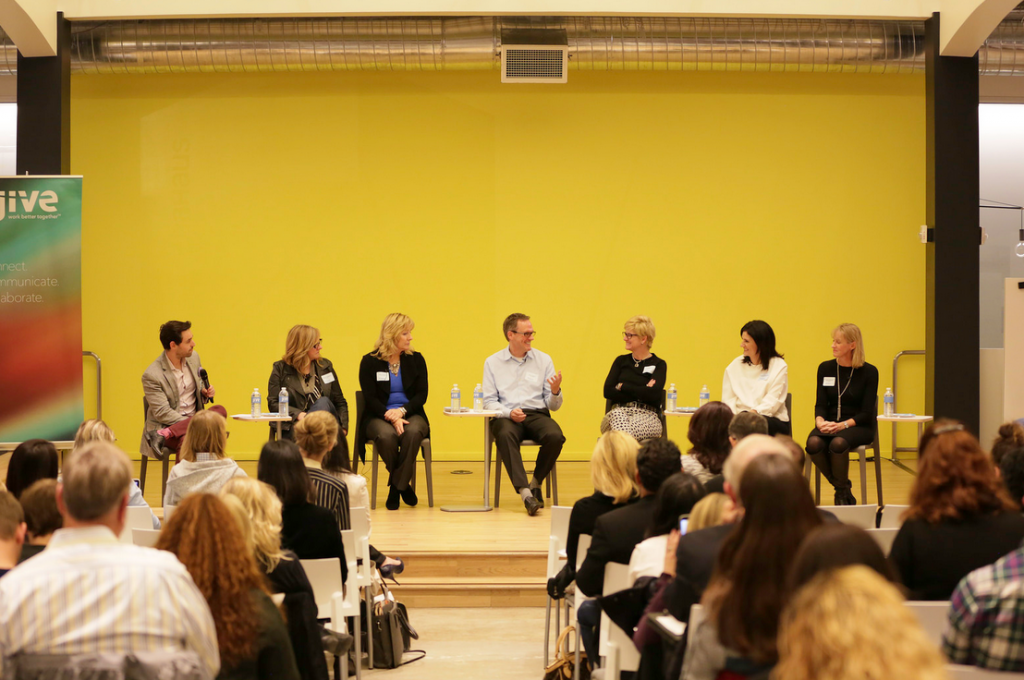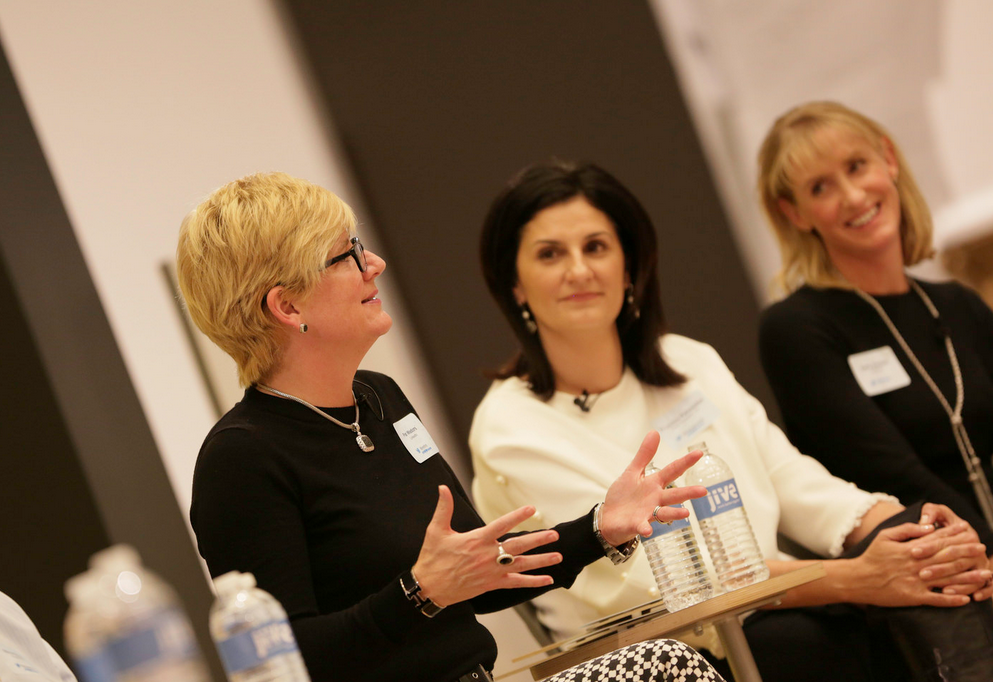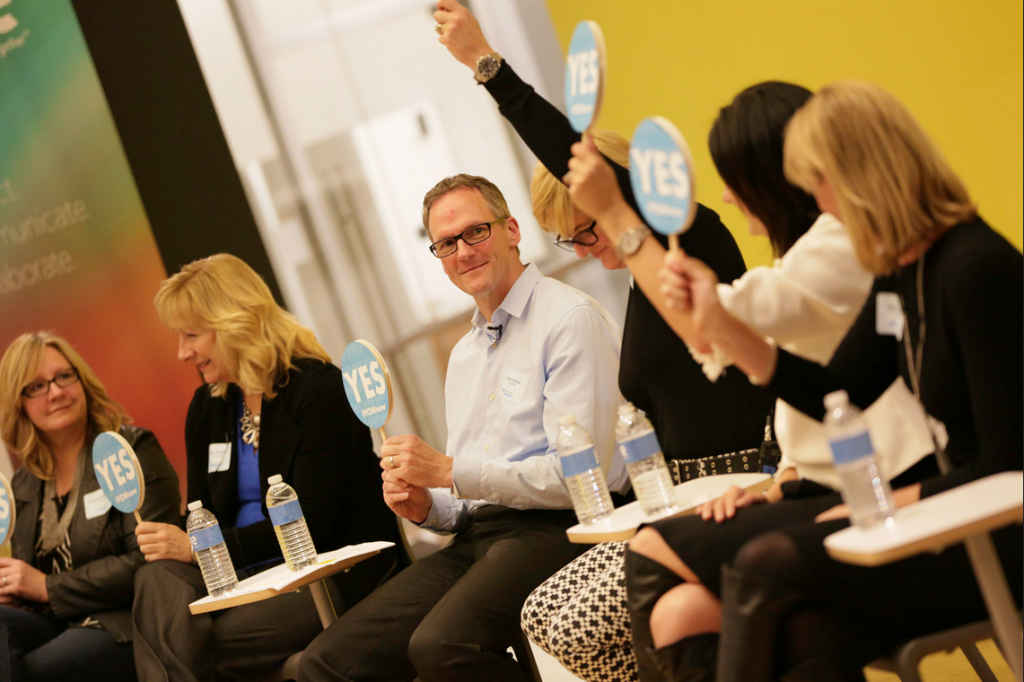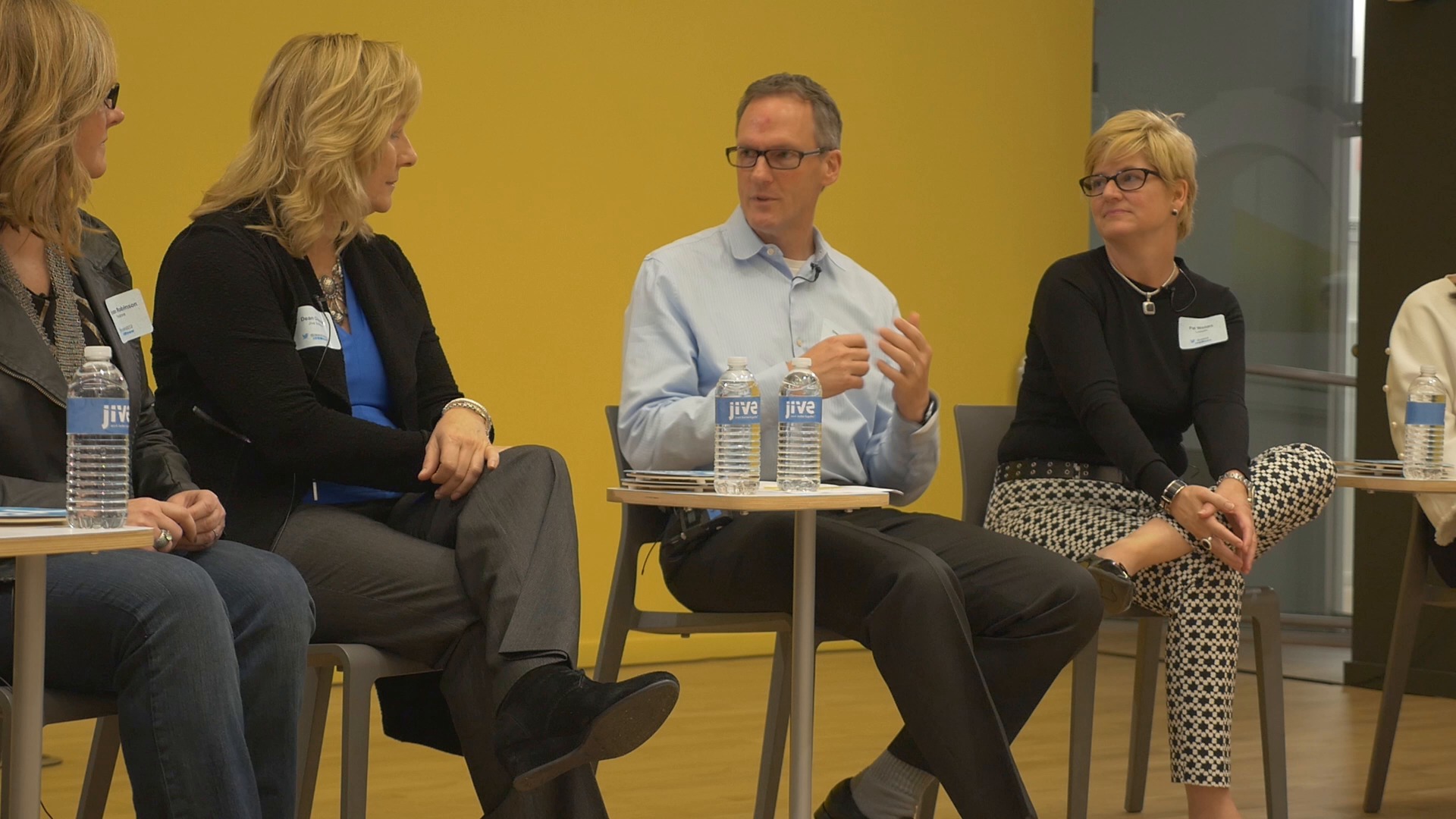In last week’s Future of Work in a Connected World blog post, we discussed how the 9 to 5 workday is becoming an outdated concept and technology is supporting this transformation to being “always on.”
This week, we are taking a look at how companies can attain and retain top talent. Hitting a home run in baseball may seem like luck, but there’s a lot more to it than a powerful swing. The batter’s skill and training are important, to be sure, but even that’s not enough to send a ball sailing over the fence. To hit a ball that can take less than four-tenths of a second to cross home plate once it leaves the pitcher’s hand, the batter needs laser-sharp focus, the right tools and supportive teammates. A lot has to go right. In fact, it’s not that different from hitting a home run in business.

Hitting a home run in business

HR and IT leaders convene to discuss the Future of Work in a Connected World
Perhaps that’s why baseball was on the minds of panelists at a Jive panel event that took place at HanaHaus in Silicon Valley in December. The event, Evolving Workstyles: The Future of Work in a Connected World, was moderated by author and futurist, Jacob Morgan and featured the Chief People and HR Officers from Cisco, LinkedIn, Pandora, NetSuite and Jive Software, as well as the VP of IT and Security at SugarCRM.
To consistently hit home runs in business, you have to build—and nurture—the right team. But, with in-demand talent scarce and today’s workers seemingly poised to become free agents on a whim, it’s harder than ever to attain and retain employees who will knock it out of the park for your company. “I think it’s you just have to be disciplined and determined about working it every day because every time you think you’ve figured it out, something changes somehow, and you’ve got to start all over again,” says Dean Chabrier, the Chief People Officer at Jive.
Like the most successful baseball scouts, LinkedIn CHRO, Pat Wadors, uses statistics and analytics to measure the effectiveness of her team’s efforts. She “triangulated” the alignment between high discretionary effort, great performance and performance ratings and compared those against engagement scores and turnover, she says. “And then I looked at that and I said, ‘Okay, you kind of get a heat map, and you kind of figure out [the] three or four things that really matter.’ And I’m like, “Bingo, I’m going to focus on this stuff!”
That “stuff,” says Wadors, is empowerment, accountability and appreciation. “It’s very simple,” she says. “If I empower you to achieve a goal, you’re highly motivated. If I hold you accountable towards that goal, your enjoyment and your engagement goes even higher. And then, if I appreciate you once you achieve that goal, I hit a home run.”

“I think that in the future it's bring your own device, it's pick your own benefits, it's pick where you work and it's pick how you work,” says LinkedIn CHRO Pat Wadors

Future of Work panelists enthusiastically agree that attaining and retaining top talent is crucial
Collaborative digital workplaces offer the solutions you need to engage your workforce so that, come game day, not only will you have the best team in place, your heavy hitters will be far less inclined to bolt for the competition. Finding and keeping the best employees has never been more important because, in business, game day is every day. To learn how all of the panelists are dealing with attaining and retaining talent, as well as several other topics related to the Future of Work, watch the video below.
How to Attain and Retain Employees
See how Jive works.
Request a personalized demo.
See for yourself how Jive can drive productivity and engagement across your organization. Get a free personalized demo.
